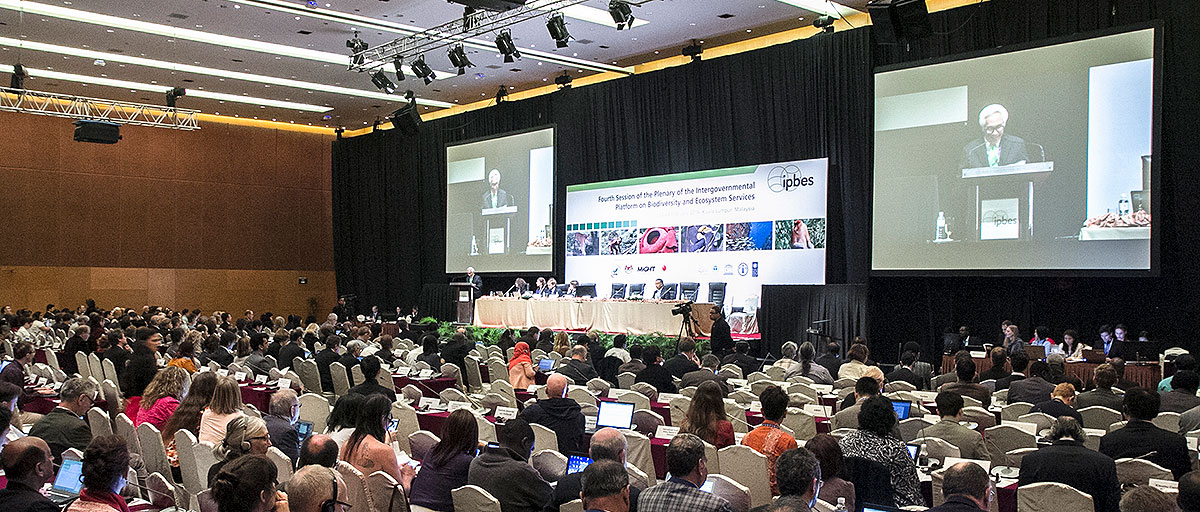
While the Sustainable Development Goals (SDGs) prioritize those most vulnerable to climate change indigenous mountain communities are often neglected. SwedBio and partners aim to address this by organizing workshops between indigenous mountain community leaders, policymakers, scientists and other actors. Photo: P. Malmer
Indigenous mountain communities
Peak changes
Indigenous mountain communities share biocultural adaptation experiences to climate change
- SwedBio, IIED, ANDES and MSDSP co-authored report highlights outcomes from International Network of Mountain Indigenous Peoples (INMIP) second International Learnin Exchange in Tajikistan
- Workshop uses interactive “walking workshop” method, facilitating participants to interact with the landscape and articulate experiences
- INMIP calls for more international collaboration of indigenous mountain communities, and for community seed banks as a means to increase resilience against climate change
Living on a mountain side had always been paired with risk, but it has also been a stable and culturally rich way of life for many. However, add climate change to the mix, and you get increased risk of erosion, melting glaciers, altered water supplies, and amplified weather variability. All of these together have placed indigenous mountain communities as one of the most vulnerable populations to climate change impacts.
Supporting indigenous mountain communities
While the Sustainable Development Goals (SDGs) prioritize those most vulnerable to climate change, and highlight the importance of incorporating local, indigenous, and scientific knowledge, few initiatives have done enough to support indigenous mountain communities. SwedBio and partners, Asociación ANDES (Peru), IIED (UK) and Mountain Societies Development Support Programme (Tajikistan), aim to address this crack in collaboration through organizing workshops between indigenous mountain community leaders, policymakers, scientists and other actors.
The latest workshop took place from 11-18 September 2015 in Jafr and Tuggoz communities, Tajikistan, and resulted in a summary report entitled Climate Change and Biocultural Adaptation in Mountain Communities.
It also included information acquired from the previous workshop hosted in Bhutan in May 2014, where the International Network of Mountain Indigenous Peoples (INMIP) was formed. This network aims to promote interaction and a knowledge exchange through interactive web-based tools and through walking workshops.
“The walking workshops enable communities to learn new techniques from one another, exchange seeds, inspire revitalization of their biocultural heritage; and develop practical tools,” explains Pernilla Malmer. She works for Swedbio and is co-author of the report.
A walking workshop in the latest workshop included mountain community leaders from Bhutan, China, India, Krgyzstan, Paupa New Guinea, Peru, the Philippines, Taiwan Province of China, Tajikistan, and Thailand. Together with other actors they sought ways to cultivate collective action and share knowledge and ideas. Walking workshops, where host farmers guide visiting farmers through the landscapes they manage, are used for INMIP meetings and is as an application of Swedbio's Multiple Evidence Base approach.
“This type of workshop allowed for farmers to share knowledge and for discussions to take place in the landscape. Unlike more formal workshop settings, being out in the field enables farmers, practitioners and researchers to see innovations first hand, exchange practical knowledge, and it encourages indigenous farmers to actively share their knowledge. It creates synergies and innovations based on connections across knowledge systems, rooted in equity and reciprocity.”
Pernilla Malmer, Swedbio
In this particular workshop, participants visited Jafr in Rasht Valley and Tuggoz in Wakhan Valley in the Pamirs. Here the locals were able to share their experiences with workshop participants about methods they use to make crops grow in harsh conditions. This first hand exchange of knowledge, whether traditional, indigenous, and scientific, allows for innovative ideas to emerge, and also allows for participants to collectively explore the landscape for solutions.
The workshop also included two specialized exchanges: one between women from the different mountain communities, and another between community elders. While in both cases they recognized and appreciated learning about the differences between their cultures, they also all noticed one thing they had in common: “One of the most important things is land, both for livelihood and as a scared resource,” describes Datu Amay, an elder workshop participant from the Philippines.
Small, but mountainous moves forward
As a way to move forward, the workshop identified four action points they believe will help strengthen biocultural resilience of mountain communities in the face of climate change:
1. International seed exchanges
2. Establishing an international network of Biocultural Heritage Territories
3. Establishing an international network of Community Seed Banks
4. Developing a Declaration for governments and climate change negotiators
One of the key practical ideas emerging from this workshop is to establish an internet hub where traditional knowledge, biocultural heritage, and community seed banks could be shared. However, participants also warned of the importance that some information be kept restricted as means to protect the intellectual property rights of the indigenous peoples.
The workshop concluded in formulating their experiences in the The Tuggoz Declaration on Climate Change and Mountain Indigenous Peoples. The declaration has been successfully used to inform their governments and supported their recommendations before COP21 in Paris December 2015.
While only two workshops to date have been conducted, a third INMIP workshop is already on the agenda, and will take place in Yunnan, China, just in time to provide their governments with advice on indigenous and local knowledge before COP22 in December 2016.
Pernilla Malmer is an agronomist by training and holds a comprehensive professional experience of working with indigenous peoples organizations and networks, farmers' organizations, NGOs and biodiversity/agriculture networks in general, from local to global scales, in Sweden as well as in Latin America, Africa and Asia.








